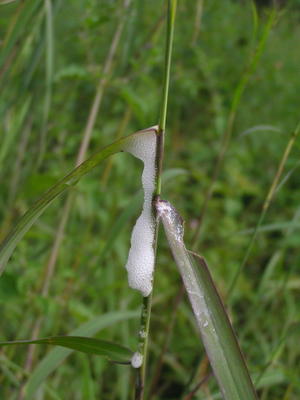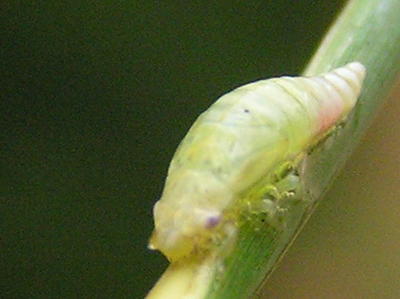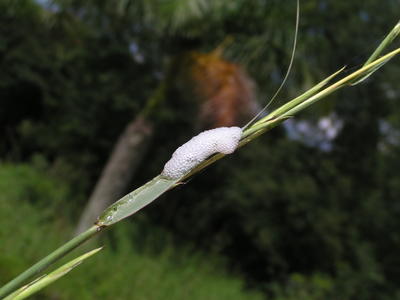.................Imagine jumping
................................................Jumping with great force
.................Force around 400 G
1 G is the force that gravity exerts on a human body at rest, and so the force needed to overcome while jumping. Apparently, Homo sapiens pass out around 5 G.
So 400 G, must be one hell of a force, exerted on the body, right ?
A 1.5 cm long insect takes the credit for this ability. Not surprisingly called a frogHopper - Philaenus spumarius -
Have you seen this insect ?
I bet you have.
At the younger larvae stage they are quite conspicuous. But, you may simply pass, shirking, with revulsion. For you may mistake them to be human spit!!!!


Its also called as spittle bug or cuckoo spit insect. Over 2000 species of this kind. Some african species produce so much spittle that they drip from tree branches like rain!

The young one - nymph - sticking onto the grass secretes that white frothy substance to counter dryness, sunlight & ofcourse, enemies. Isn't the world full of enemies ;-)) Some liquid released through the anus, gets mixed with some secretion from the abdominal glands. And, this gets frothily blown up with air bubles by another special valve in the abdomen. Wow! what a design!!!

The young one without the wings & well developed legs stays in the foamy fortress until it matures to an adult with amazing legs. It typically moves by those high jumps. This nymph walks down a grass blade. Wings are not developed.
Lets looks at its jump.
One of the frogHopper species, 0.2 inches long jumps around 28 inches.
Man - Sergei Bubka - perhaps 6 feet tall uses a pole to jump 20 feet.
Man without external aid - Javier Sotomayor - perhaps 6 feet tall jumped to 8ft , a world record.

Looking closely at jumping dynamics of animals, this must-read link tell us that there are two mechanisms.
1. Lever - long legs - Animals like kangaroo, frogs & crickets use their long legs as levers to get the force.
2. Catapult - short legs - Animals like our frogHopper uses stored energy in a rapid catapault release fashion for generating the force.
The frogHopper has 2 huge muscles in the chest - these muscles make up 11% body weight - and these power the rear legs. Once the muscles get loaded with sufficient energy, the legs which are kind of held-back, snap open, and accelerates the body upto 13 feet per second.
0.2 inches long, 400 G force, 28 inches of a jump, 13 feet/second.
The froghopper lays its egg in plant tissue around autumn, and sometime in early spring these eggs hatches, the young ones called nymphs comes out, moves towards tender stems, and inserts it specalised sharp sucking beaks, and starts drinking the sap. Then starts building his frothy fortress. And, as he grows bigger, molts a few time in the fortress. And, soon the adult leaves this foamy home and lives like a jumping jack.

The adult looks very much like a frog and hence the name. Check this link for lotz of pics esp. the adult. This nymph seems to be more developed than the other nymph seen earlier. All snaps behind lecture halls, IISc. The nymph snaps are cropped.

Frog Hopper, the high jump champion of the Animal kingdom, meet him soon.
1 comment:
Hi A,
Its amazingly well written. I am maha impressed and keep writing. You have the ability to make things simpler at least in technical things ;-))) Keep it up.I really enjoy reading it though i amy not read it the same day!!!!!!!!!!!!!!
Post a Comment